![]()
A superstar-led Philadelphia Flyers team enters a season with expectations of returning to the playoffs and building on the previous season’s first-round exit. The team comes out of the gate flat, the general manager and coach are fired and nothing changes. A rotating cast of role players and goaltenders fill the ranks as the team sputters through a meaningless second half.
Sound familiar?
The team has been here before. 12 seasons ago, the Flyers managed a measly 56 points and won just 22 of 82 games. The 2018-19 Flyers are pacing for better than that franchise-worst record, but still look well on their way to one of the poorest finishes in their history.
The misery of 2006-07 didn’t last long, however. Through a series of transactions, the team managed to quickly return to relevance, playing eight playoff series in the next three seasons. Let’s look at why that team was so bad, how it changed its fortunes and what lessons can be taken from that instant rebuild.
The Flawed 2006-07 Flyers
One reason why expectations for the 2006-07 Flyers were high was their seemingly-good forward depth. They boasted an all-time great in Peter Forsberg, who anchored team legend Simon Gagne and every-man Mike Knuble on one of the league’s best lines.
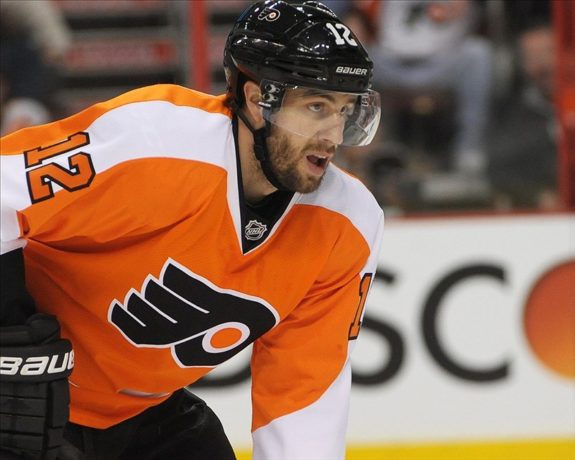
They had two promising sophomore centers in Mike Richards and Jeff Carter, and had just traded beloved depth center Michal Handzus to the Chicago Blackhawks for Kyle Calder. The new wing was expected to add more scoring punch, having just potted 26 goals and 59 points on an offensively-barren Blackhawks team.
But those Flyers boasted more good forward names down the lineup than actual good forwards. R.J. Umberger was decent but young, and a wily old Sami Kapanen and an even older Geoff Sanderson weren’t who they once were. The Flyers hadn’t yet adjusted to the post-lockout “new NHL,” so plugs like Ben Eager and Todd Fedoruk also filled out the lineup.
The defense was equally uneven. Clutch-and-grab All-Star Derian Hatcher was the lone Flyer to suit up 82 times in 2006-07. The promising Joni Pitkanen played 77. Mike Rathje played his final 18 games, while AHL-level projects like Alexandre Picard, Denis Gauthier, Freddy Meyer and Randy Jones all saw serious minutes. In net, an unremarkable duo of Antero Niittymaki and Robert Esche started the season.
Everything went wrong. Forsberg was in and out with injury. The two main goalies combined for less than a .900 save percentage. The team started 1-6-1, coach Ken Hitchcock was fired and GM Bob Clarke “graduated” to Senior Vice President so Paul Holmgren could take over. AHL coach John Stevens took the bench, but the team just kept losing.
What the 2018-19 Flyers Have in Common
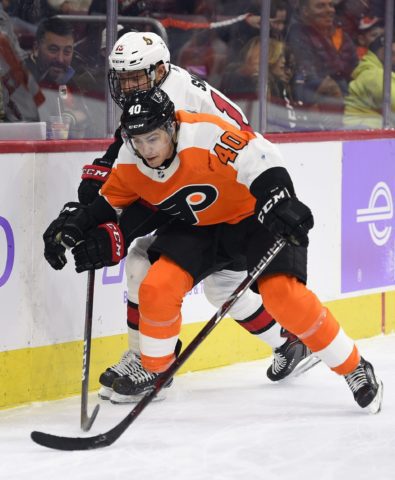
In some ways, the current malady reflects the one the team faced 12 years ago. No one expected the 2006-07 Flyers to be the worst team in the NHL, just as no one expected this incarnation to be in that conversation. Then, as now, poor early results cost a GM and coach their jobs.
The roster is just as sloppily constructed. Like in 2006-07, forward depth appeared good enough to make up for the questionable goaltending and defense, but speed is still an issue. A remarkable number of current Flyers forwards play a deliberate game. For Claude Giroux, that’s not a knock. But for longtime Flyer Wayne Simmonds and recent returnee James van Riemsdyk, transition play and zone entry have never been their forte. Beyond Travis Konecny, there isn’t much footspeed up front.
A glut of inadequate role players also recall that lost season. Jordan Weal, now a Coyote, might be a modern-day Stefan Ruzicka. Mike York, Jori Lehtera: same difference. Certainly, the rotating goalie cast (seven so far) evokes the five that received starts in 2006-07. And where there were once Rathjes and Hatchers, there are now Christian Folins and Andrew MacDonalds.
How the 2007 Flyers Rebuild Went Down
Upon becoming GM, Holmgren instantly showed off the fidgety, insatiable hunger for change that turned the team around and later defined his legacy–though despite that legacy, he actually pulled it off without ditching too many futures.
In an amazing turn of fortune, Meyer was shipped to the New York Islanders for Alexei Zhitnik, who, in turn, was flipped to the Atlanta Thrashers for future mainstay Braydon Coburn. Goaltender Martin Biron was then peeled off the Buffalo Sabres for a second-round pick and he posted the best numbers of any Flyers keeper that season and started for the two following campaigns.
The biggest deal came when a contending Nashville Predators team took a chance on the last months of Forsberg’s contract in exchange for a first and third-round pick, young defenseman Ryan Parent and promising forward Scottie Upshall.
Though Parent never quite shook out, Upshall provided some spunky depth scoring for the rest of that campaign and the next. The first-round pick turned into treasure, thanks to Nashville’s GM David Poile. Holmgren convinced him to take the first back in exchange for the rights to pending free agents Kimmo Timonen and Scott Hartnell. The Flyers then locked down the veteran defenseman and burly puck-jammer with long-term contracts.
July 1, 2007 brought two other big moves. First, Holmgren signed sneaky center Danny Briere to a then-eye-popping eight-year, $52 million deal. The same day, Joni Pitkanen, Geoff Sanderson and a third-round pick were swapped to the Edmonton Oilers for defenseman Jason Smith and sniper Joffrey Lupul.
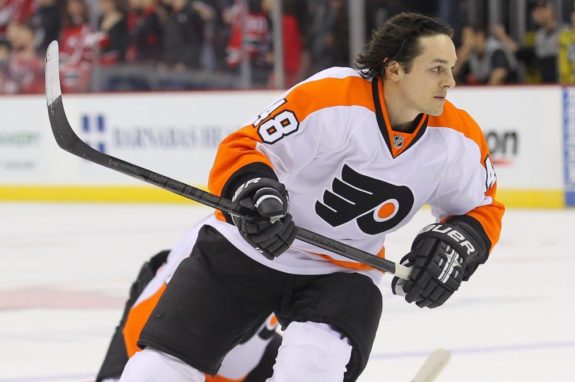
Suddenly, the “rebuild” was complete. In a few months, the team had added their top defensive pairing for the next few seasons (Coburn and Timonen), a second pairing defender and eventual captain (Smith), two top-six wingers (Lupul and Hartnell), a top-six center (Briere), some hit-or-miss depth (Upshall, Lasse Kukkonen, Parent) and a starting goaltender (Biron).
With a roster almost 50 percent new, and further development from Carter and Richards, the Flyers posted 101 points in 2007-08 before an improbable run to the Eastern Conference Finals. The draft pick their 2006-07 futility earned became van Riemsdyk, and Giroux, picked a year prior, soon contributed in a major way.
Chuck Fletcher Has a Huge Head Start
The 2007 rebuild relied on cash, tenacity and luck. The last part is unpredictable, but if Chuck Fletcher wants to, he can perform a turnaround nearly as dramatic as the one Holmgren completed 12 years ago–he’s already starting with a huge advantage.
Back then, they had an excellent scoring center in Carter and a two-way maven in Richards. Today, they have one of the league’s best players in Giroux and a good comparable in Sean Couturier. Add in evolving talents like Oskar Lindblom, Nolan Patrick and Konecny with names like Joel Farabee and Morgan Frost on the way, and there’s enough forward talent to let some go.
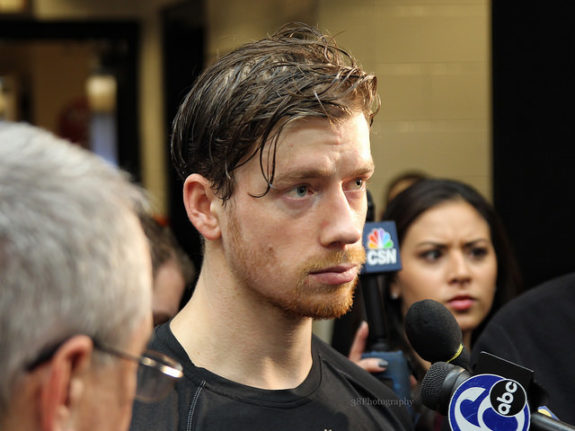
Unlike in 2007, the Flyers do currently possess a promising prospect pipeline, and this time around they could consider flipping some for established assets. Veterans like Michael Raffl, Simmonds and even Jakub Voracek have value ranging from modest to respectable to substantial and could offset any futures Fletcher might move out in larger deals.
The Flyers also won’t need to seek a tall, 22-year-old smooth-skating defender like they did with Coburn. In Sam Morin and Philippe Myers, they might already have at least one in-house to bolster a corps that already includes Ivan Provorov and Shayne Gostisbehere. Plus, while they may still benefit from a stopgap veteran goaltender like Biron, any addition will at best split time with, or back-up, Carter Hart, who is already turning heads at 20 years old.
What the Flyers Could Do
Despite the head start, the same philosophy behind the 2007 turnaround could come into play for potential trades and signings.
League conditions can facilitate big changes, and the NHL is once again in flux. Back then, teams were still adjusting to salary cap shock. Today, several franchises stocked with good veterans (the Blackhawks, St. Louis Blues and Los Angeles Kings) find themselves bottom-feeders who may need roster makeovers. Other upcoming teams like the Toronto Maple Leafs have more young talent than they can realistically play and afford. Another expansion draft looms in the near future, creating certain urgencies and uncertainties. And no one knows what’s going on in Edmonton.
Rather than gunning for picks and distant prospects to add to an already-jammed pipeline, Fletcher could target young, established talent the way Holmgren did with Coburn (then 22), Upshall (23) and Lupul (24). He could also add instant-impact veterans at low cost, like Holmgren did with Timonen and Hartnell.
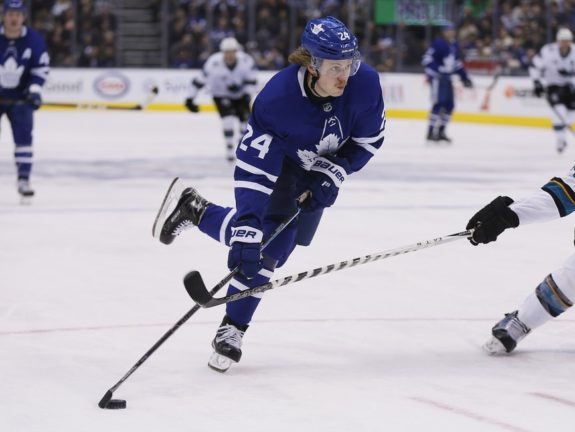
Wingers like Toronto’s shifty 22-year-old Kasperi Kapanen or Edmonton’s big, fast 20-year-old Jesse Puljujarvi could be ripe targets to quicken and deepen the forward group in fair trades. In both cases, they’d be paying for underutilized potential rather than maximized mediocrity like they got from Kyle Calder.
And if Fletcher wants to add a tried-and-true All-Star leaders to his young defense, he likely has the pieces. He could call up the Blues to ask about Alex Pietrangelo, or even see if the Blackhawks want to give future Hall-of-Famer Duncan Keith a last act in new colors. There are enough good players on bad teams right now to give it a try.
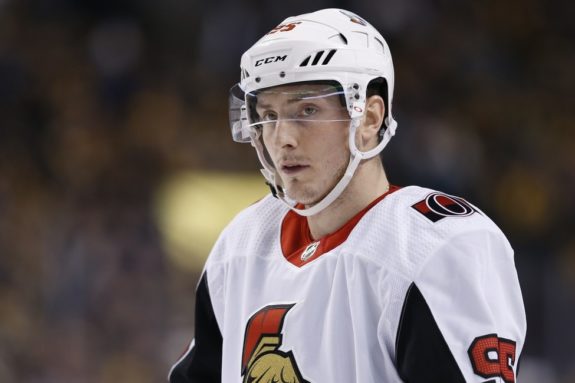
With ample cap space, the free agent market is also looking friendly. Smooth-skating offensive stars like Artemi Panarin and Matt Duchene are soon to reach unrestricted status, as is defenseman Erik Karlsson (barring extensions). Also available are contributors like defender Alex Edler and winger Mark Stone, among others.
The Flyers’ future is Fletcher’s oyster now. He has more resources than did the last GM who faced similar circumstances, and the option to strive for the same drastic results. One thing’s for certain: The Flyers need a face-lift, whether from outside acquisitions, internal graduations or a combination. The impetus is there: a fanbase trained to be impatient, a franchise great who deserves a few deep playoff runs and an antsy Holmgren lurking in the background.
What Fletcher does is anyone’s guess. Though in a season like this, it’s hard not to remember–or maybe even pine for–the sort of gutsy, full-fledged turnaround the Flyers once engineered in their darkest hour.